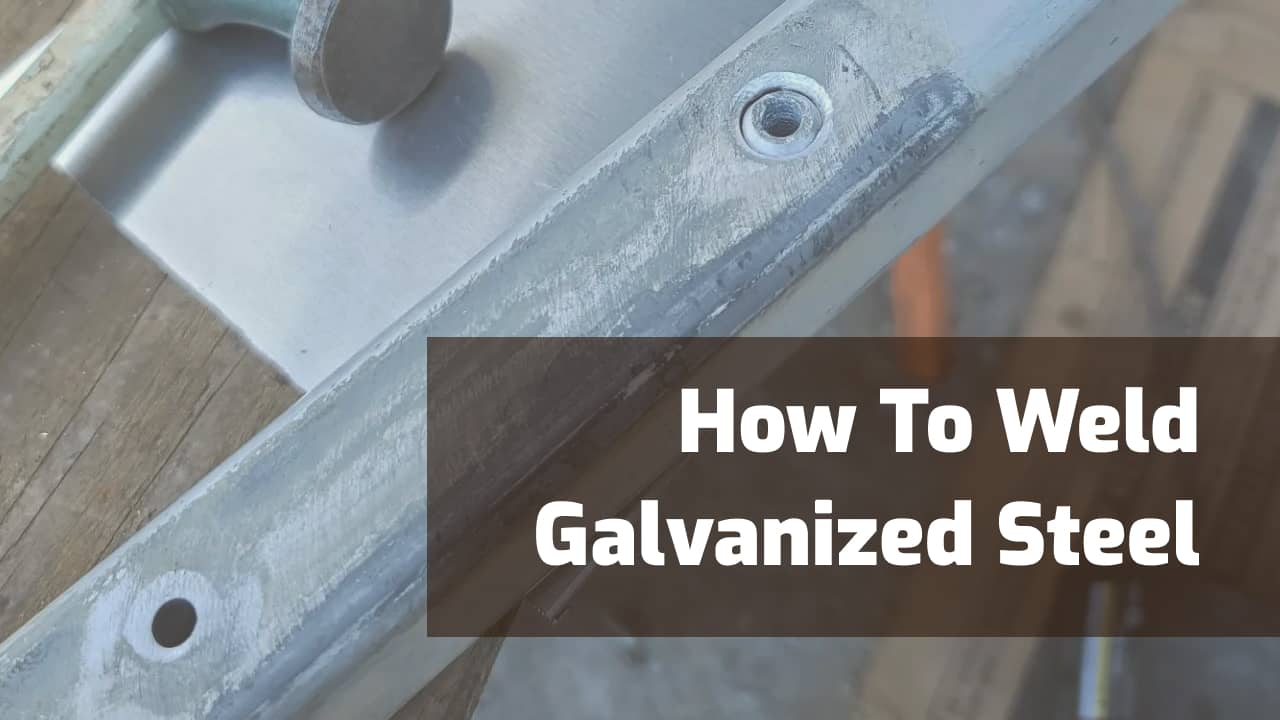Galvanized steel has a zinc coating to protect it from corrosion. You apply the coating after the fabrication and welding of a part.
But sometimes, you’ll need to weld galvanized steel.
Welding galvanized steel is possible, as it’s just like regular steel but with a zinc coating. By removing this coating, you can weld it like you would with any other steel.
You can also weld it with the coating, but there are some important safety precautions you must be aware of.
This article explains why it can be hard to weld galvanized steel, how to prepare it, the different welding processes available, and how to treat it after welding.
Why It’s Hard To Weld Galvanized Steel
Welding galvanized steel is like welding regular mild steel with a few added complications. These complications can make galvanized steel more difficult for you to weld.
Zinc melts and vaporizes at a lower temperature than steel. These zinc fumes may become trapped if they can’t escape the weld area.
The trapping of gasses is especially true when welding tee or lap joints where two galvanized surfaces butt together at the root of the weld.
As the zinc vaporizes between the plates, it has nowhere to go but into the weld metal. This trapped gas will cause porosity.

© weldguru.com – Image usage rights
Another issue with welding galvanized steel is that the zinc will destabilize the arc.
This effect causes excessive spatter and will lead to a welding bead that looks worse than one done on bare mild steel. You cannot do much to stop the spatter aside from using anti-spatter spray.
Zinc can also cause weld cracking when you use an electrode or filler wire with a high silicone content. If you use an electrode or filler wire with more than 0.85% silicone content, the silicone will cause zinc to penetrate the base metal.
The zinc makes its way into the base metal and can cause cracking. This possibility is especially a concern where the zinc coating is thick.
The best way to deal with these issues is to prepare the metal for welding by removing some of the zinc coating with a grinder.
How To Prepare Galvanized Steel for Welding
You’ll need to remove the zinc coating from the steel to get the best results when welding galvanized steel.
Doing this gives you the least possibility of weld defects because you’re welding bare mild steel rather than coated steel.
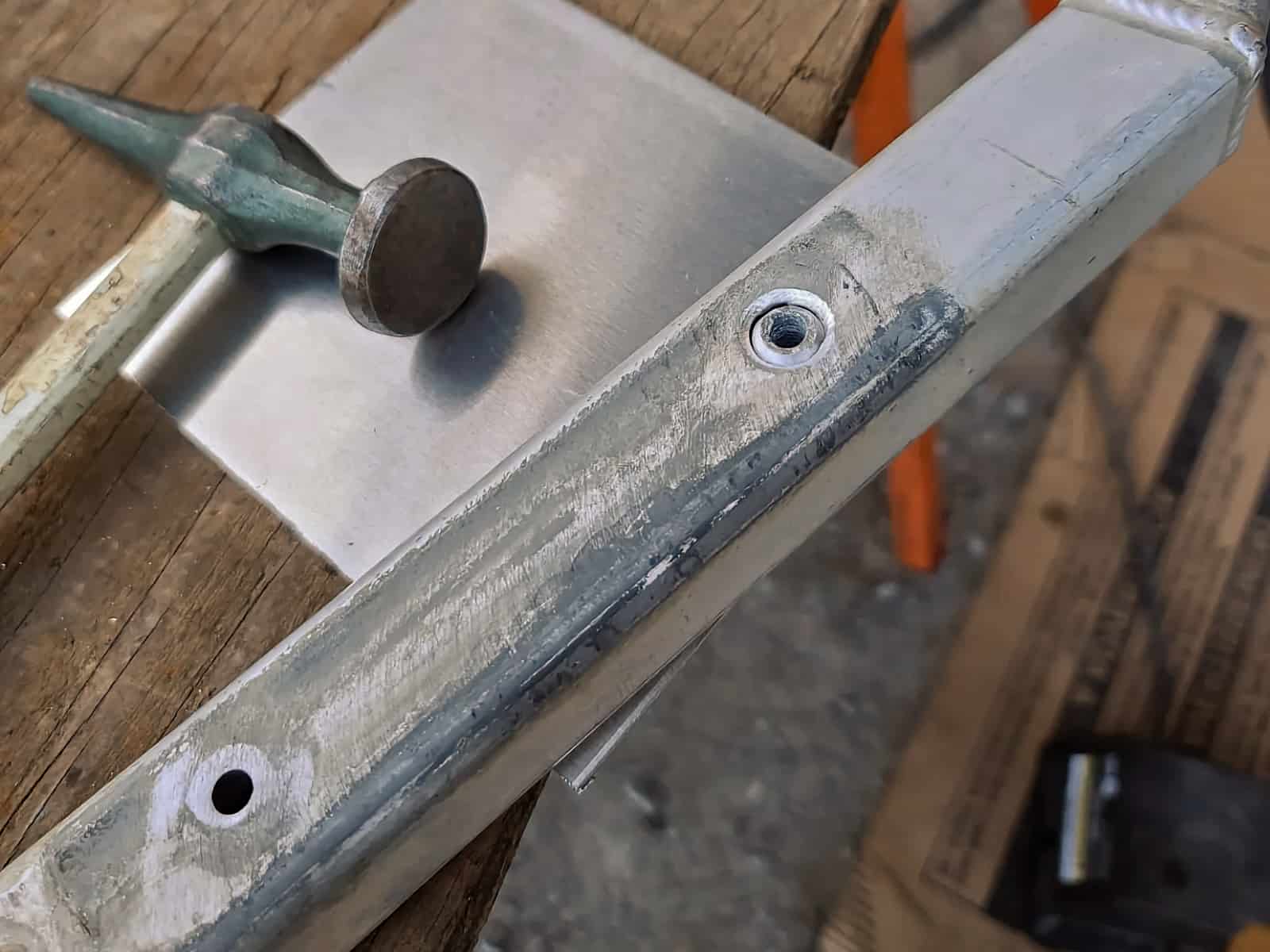
© weldguru.com – Image usage rights
No welding process can weld galvanized and mild steel, so removing the zinc is your best bet.
Many methods exist to remove the coating, but the easiest way is to grind or sand the coating off with an angle grinder.
When you grind galvanized steel, always wear a respirator to avoid inhaling any of the dust created. Zinc dust will cause metal fume fever if inhaled in large amounts.
You can sandblast or use an oxy-acetylene torch to remove the coating, but grinding is the most cost-effective and straightforward choice for most people.
You don’t need to remove all the coating. Remove the coating to the bare metal, with two to four inches on either side of the weld joint.
Remember to remove the zinc from the back side of the joint, too. You need to remove the zinc anywhere in the weld area that gets red hot to avoid creating fumes.
Is it Possible to Weld Galvanized Steel Without Removing the Coating?
Welding galvanized steel is possible without removing the coating, and if you’re careful, the welds will be structurally sound.
Most often, galvanized steel welding occurs outside, where you place the parts in their final positions.
In these situations, it’s impossible to galvanize after construction, so you must weld the galvanized parts together in the field.
Some welding processes perform better when welding galvanized steel, and you must consider them before welding anything galvanized.
For example, if you had a choice between MIG (GMAW) and stick welding (SMAW), you’d choose stick welding.
There’s still an increased risk of weld defects that wouldn’t exist when welding mild steel. This risk makes removing the coating the best option.
What Type of Welding Is Best for Galvanized Steel?
If you remove the coating from galvanized steel, you can use any welding process and filler metal that you would use for welding mild steel.
But, if you’re welding galvanized steel without removing the coating, there will be some special requirements depending on the process.
Stick Welding (SMAW) Galvanized Steel
Stick welding is the best choice for welding on galvanized steel because it’s the best outdoor process, where most galvanized welding occurs.
Stick welding also has an aggressive arc and flux coating, which are good for dealing with zinc.
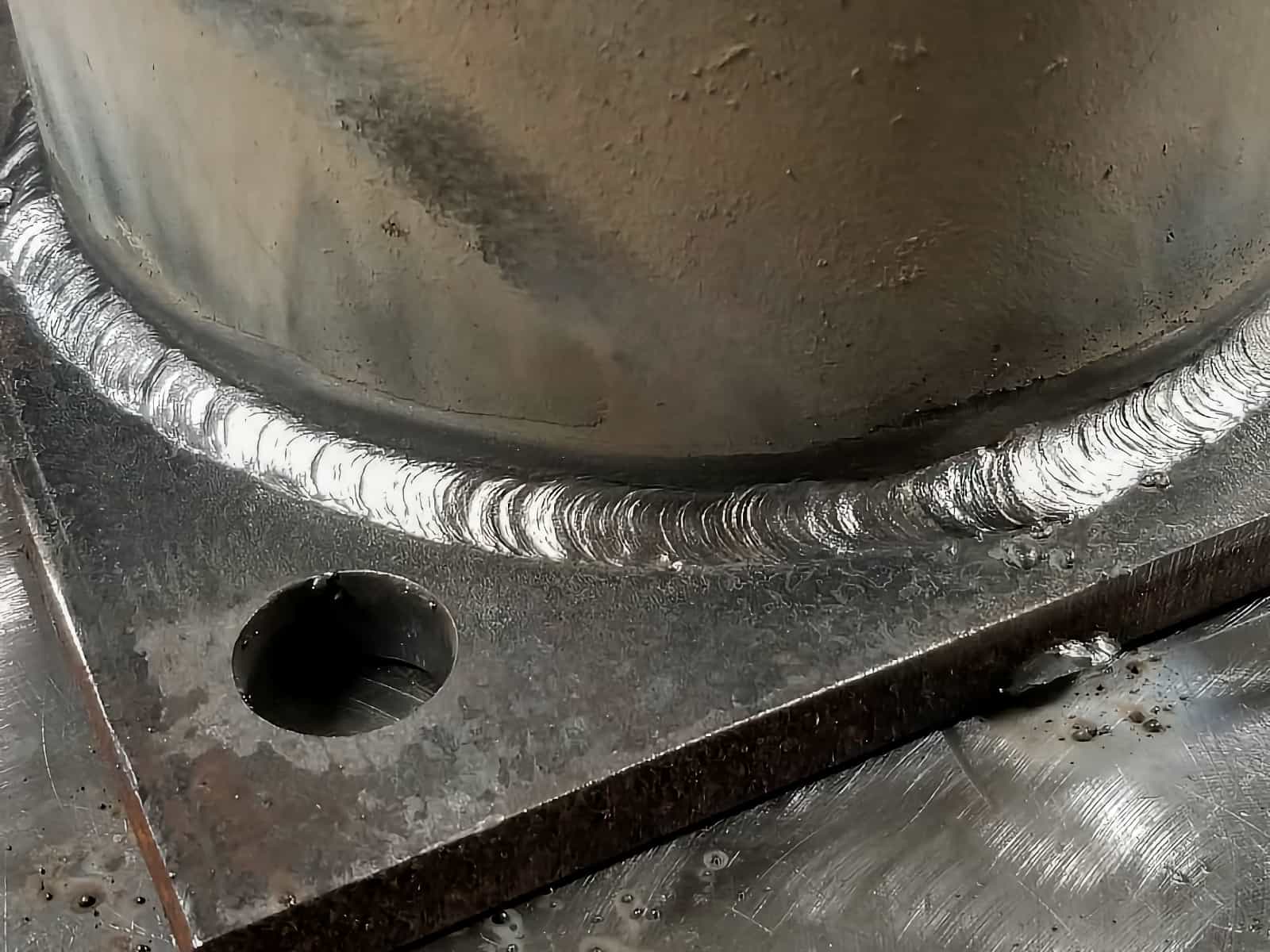
© weldguru.com – Image usage rights
Rods with a cellulose coating, like 6010 or 6011, are the best for welding galvanized steel because their strong arc vaporizes the zinc better than other rods. These electrodes also have a low silicone content, reducing the possibility of weld cracking.
The whip technique used when welding with a 6010 or 6011 electrode burns off the zinc ahead of the weld puddle. The reason that you’re able to use this whip technique is because of the large amount of shielding gas that the burning flux creates.
This gas shield is what protects the weld area from the atmosphere.
For galvanized sheet metal, a 6013 electrode is the preferred choice, even though it’s a rutile electrode and doesn’t have the advantages of cellulose-coated electrodes.
6013 electrodes don’t use a whip technique when welding. Instead, they drag along the weld joint like a 7018 electrode.
MIG Welding (GMAW) Galvanized Steel
You can use MIG to weld galvanized steel, but it poses several problems, making it a poor choice.
Since MIG wire doesn’t have a flux coating or core, there are no added elements to help reduce the possibility of weld defects.
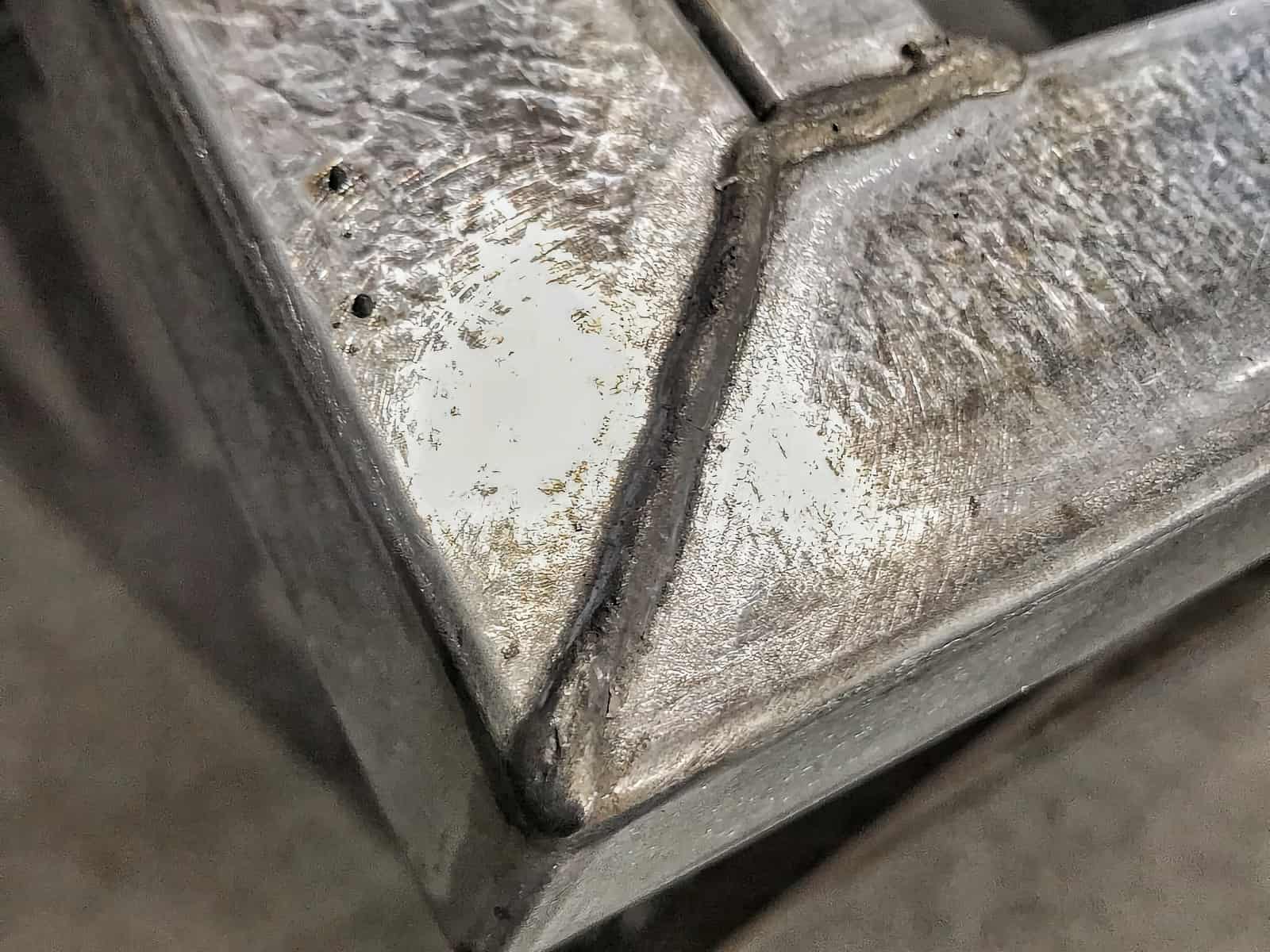
The coating has not been removed, and it is using the wrong wire (316Lsi).
© weldguru.com – Image usage rights
Flux helps to clean the weld puddle of impurities, which limits the number of weld defects. Without flux, you’re relying on the zinc fumes to leave the weld area on their own rather than the flux binding with it and keeping the zinc out of the weld.
If you must weld galvanized steel with MIG, you’ll want to use spray transfer whenever possible. The higher the heat of spray transfer, the faster the zinc will melt, but it causes a lot of spatter.
The problem with short circuit transfer is that the arc temperature will often be too low to vaporize the zinc, causing it to stay in the weld puddle. This quality causes weld defects like lack of fusion, porosity, excessive spatter, and possible cracking.
Another issue with MIG welding on galvanized steel is that some wires you use on mild steel, like ER70S-6, contain too much silicone. You should instead use ER70S-3 or ER70S-2, which have less silicone than ER70S-6.
If you’re using short circuit transfer, 100% CO2 shielding gas will make for a hotter arc. The hotter arc will burn off the zinc faster, reducing the number of weld defects you’ll find.
For welding on spray transfer, use a 90% argon to 10% CO2 mix, going up to a 20% CO2 mix if you need to burn the zinc faster.
There are a few techniques you can use to get better results when welding galvanized steel with MIG:
- Use root gaps that are slightly larger to allow the zinc gas to escape.
- When welding a tee or lap joint, leave a small gap between the plates.
- Use a pulling technique rather than a pushing technique.
- Weld slower to increase the amount of heat or increase the wire speed and voltage to increase the heat input.
- Use anti-spatter spray on the nozzle.
If you have a MIG welder, consider using a flux-core (FCAW) wire instead for better results.
Flux Core Welding (FCAW) Galvanized Steel
If you need to weld galvanized steel using a MIG welding machine, use a flux-core wire instead of a MIG wire. Flux core wire gives much better results because the flux in the wire’s core helps clean the weld puddle of impurities.
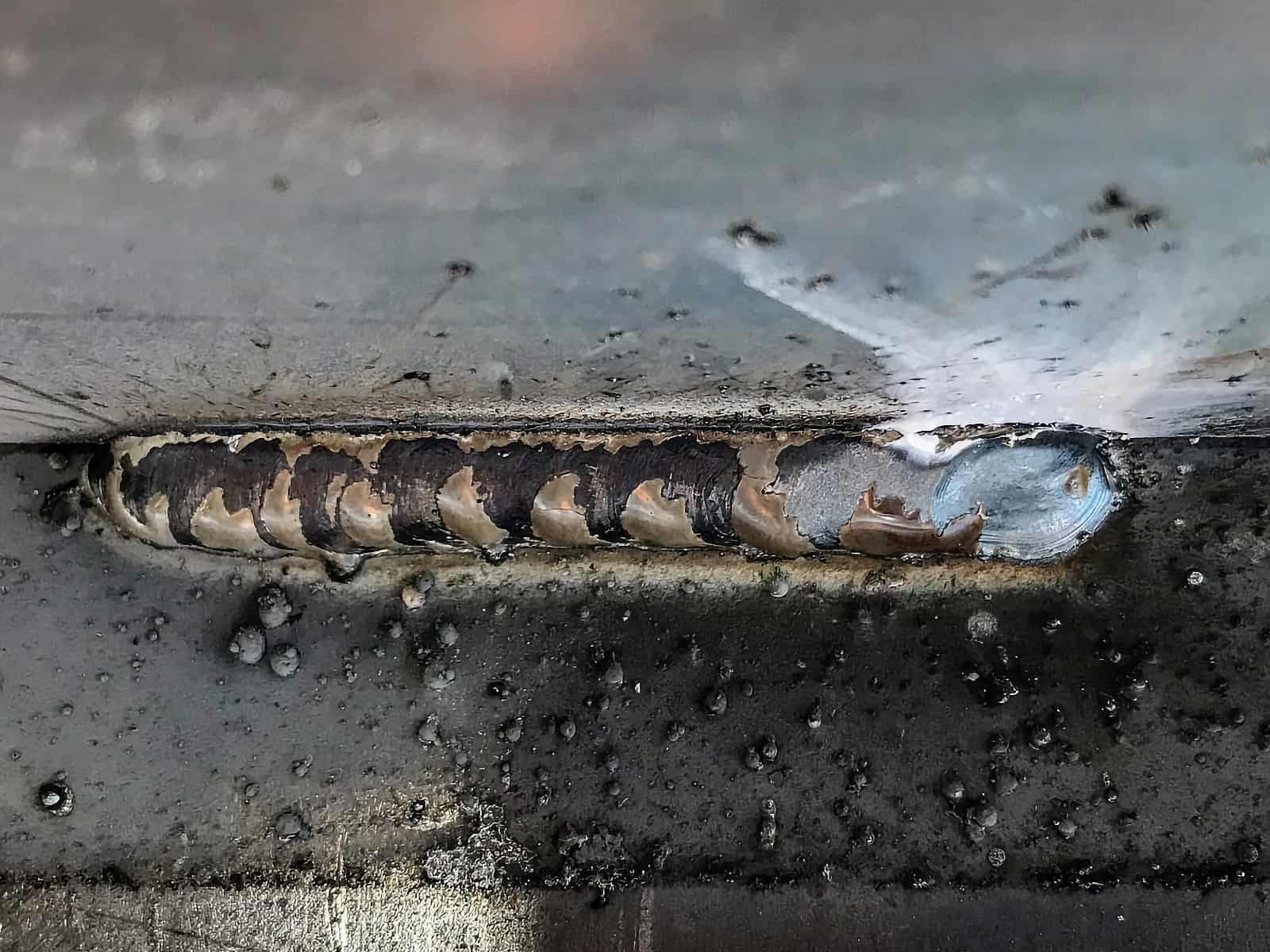
© weldguru.com – Image usage rights
The best wire to use is E71T-11. This wire is self-shielding, so you don’t need an external shielding gas bottle to protect the weld area from the atmosphere. Self-shielding wire is also suitable for use outdoors, where most galvanized welding will occur.
If you use a self-shielding wire in your MIG welding machine, switch the rollers to knurled flux-core wire rolls and check the polarity. Flux core will need a DC electrode negative, whereas MIG is DC electrode positive.
One major disadvantage is that welding sheet metal with flux core wire is more difficult because flux core has a hotter, more aggressive arc.
There are gas shielding wire options, such as E71T-1. The resulting welds will be lower quality than those done with E71T-11 but slightly better than those done with MIG. This wire is also unsuitable for welding outdoors, making it a poor choice for galvanized welding.
TIG Welding (GTAW) Galvanized Steel
Only use TIG welding with galvanized steel if you remove the coating to bare steel. TIG welding requires that everything be clean and spotless for success.
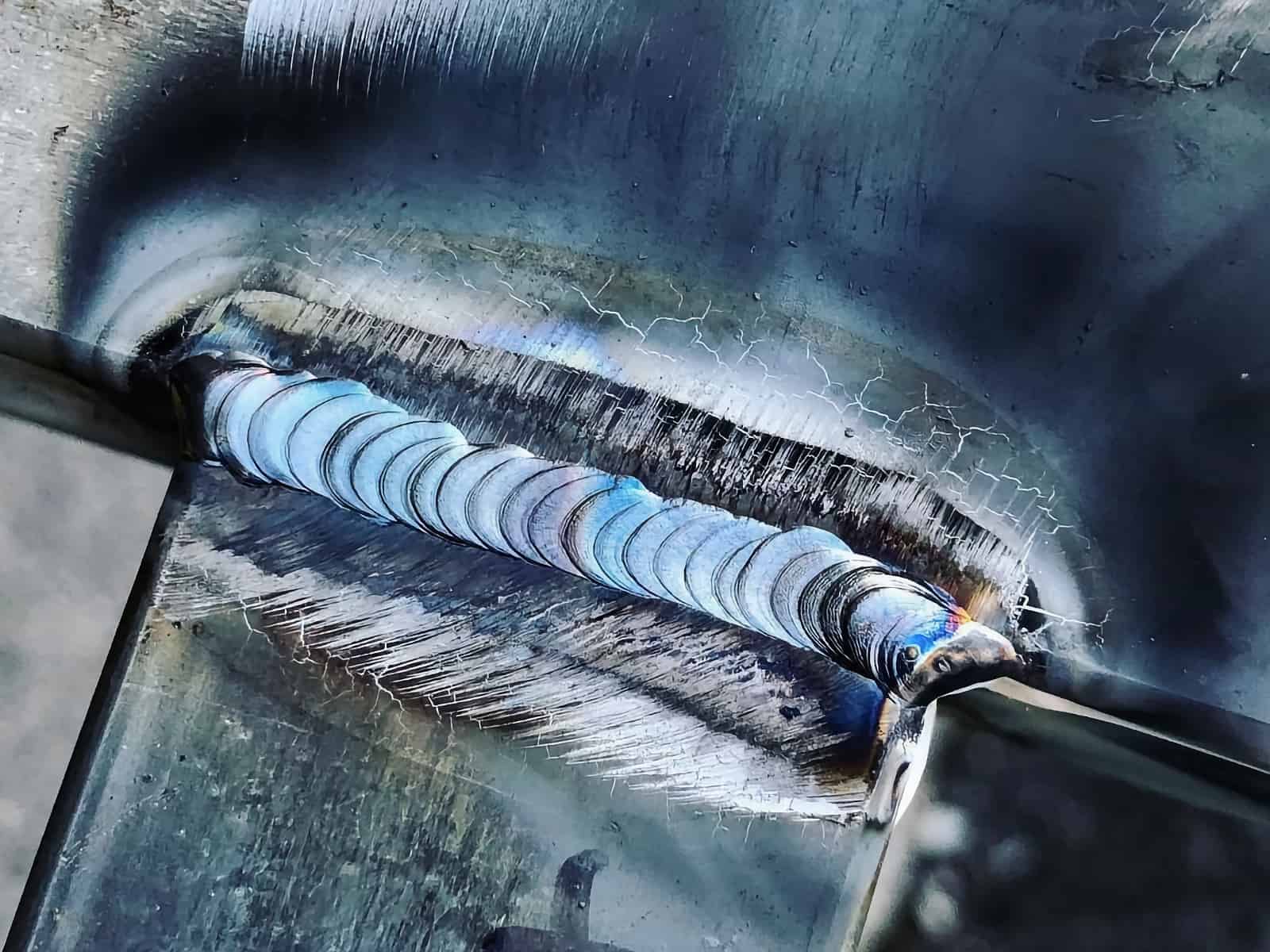
© weldguru.com – Image usage rights
When you try using TIG to weld galvanized steel, the vaporization of zinc will contaminate the electrode and the weld puddle. This effect leads to very poor results and more cleaning and reprofiling of the electrode.
If you must use a TIG welder to weld galvanized steel, use it as a stick welder instead. Most TIG welding machines are also stick welding machines, and all you need to do is switch the TIG torch for an electrode holder.
But if you still want to weld galvanized steel with a TIG welder, you can do a few things for better results.
- Hold the torch at a steeper angle, around 70 degrees.
- Increase the flow rate of the gas to blow away the zinc fumes.
- Do not use a gas lens.
- Use an ER70S-2 filler rod for TIG welding galvanized steel for better results.
The best shielding gas to use is 100% argon, the most common shielding gas for TIG welding.
This process won’t work outdoors since you need to use an external shielding gas for TIG welding.
Tips for Welding Galvanized Steel Successfully
If you need to weld galvanized steel, a few tips can help you succeed:
- Remove the coating 2-4 inches on either side of the weld joint.
- Use stick welding whenever possible.
- Leave a small root gap in the lap and tee joints.
- Use a slightly wider root gap for butt welds.
- Always fill the craters at the end of the weld.
- Keep the arc length short.
- Connect the work clamp (ground clamp) to clean bare metal if possible.
- Use a higher amperage or slower travel speed.
- Use the thickest electrode possible so you can run a higher amperage.
Post Weld: Protecting Galvanized Steel
If you weld on galvanized steel, the zinc coating will become compromised.
This consequence reduces the anti-corrosion properties, and the metal will rust if exposed to damp conditions.
After welding, you must take steps to protect the compromised areas from corrosion.
A paint that has a lot of zinc in it often coats the metal. You can also use a cold galvanized coating in an aerosol can now.
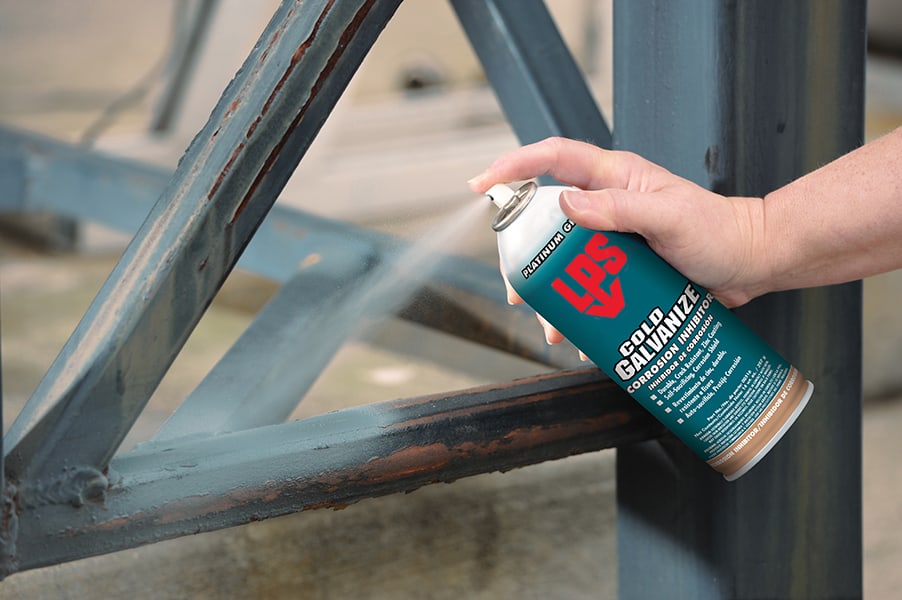
Credit: https://www.itwprobrands.com/product/cold-galvanize
Before you paint the metal, sandblast or clean the area with a sanding pad on an angle grinder. Doing this will remove any residual coating and contamination.
Wipe the prepared surface with thinner or solvent, then apply the paint to the bare metal.
The Dangers of Welding Galvanized Steel
This is the most common health issue associated with inhaling zinc fumes is metal fume fever which is an illness known for its flu-like symptoms.
Welders have set occupational exposure limits to prevent harmful exposure. However, the most recent study, published in Particle and Fibre Toxicology in 2018, has shown adverse effects far below the concentration of the current exposure limit.
Surprisingly, little is known about the long-term effects of breathing zinc dust or fumes, according to the Agency for Toxic Substances and Disease Registry (ATSDR). Most studies lead to potential risks without conclusive evidence.
With no long-term studies, you should be taking the utmost safety precautions with any welding fumes.
Metal Fume Fever
Metal fume fever primarily affects welders due to inhaling metal oxide particles during welding, causing lung inflammation. The main metal oxide is zinc oxide, with cadmium and manganese also present in certain welding processes.
Symptoms of metal fume fever include chills, fever, nausea, headaches, and extreme thirst. These symptoms usually occur within the first 4 hours and last up to 48 hours.
The illness is generally mild and self-limited. Treatment involves addressing symptoms with fever-reducing medication, fluids for dehydration, and occasionally oxygen for hypoxemia.
A Myth: Drink Milk After Welding Galvanized Steel
You may have heard that drinking milk will treat metal fume fever. This is not the case; milk and metal fumes enter the body through different pathways, and one does not affect the other.
Also, there has never been any scientific evidence to support the practice of drinking milk to treat metal fume inhalation.
The best treatment will always be to remove yourself from the fumes and rest. If you have pain or fever, over-the-counter, anti-inflammatory drugs can help with those symptoms.
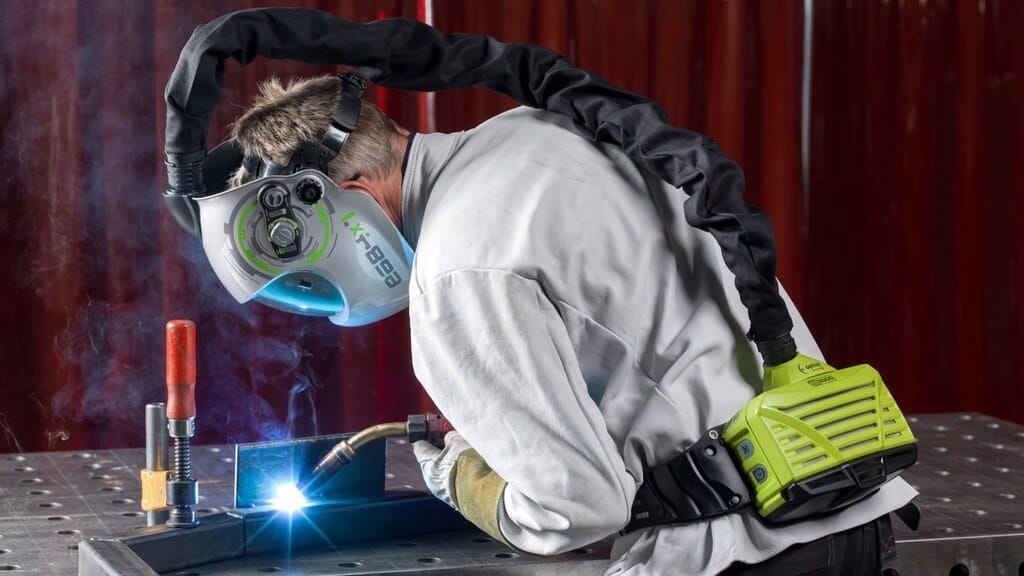
Your best option to deal with the fumes caused by welding or galvanized welding is the following:
- Remove the zinc coating from the metal surface.
- Install fume extraction or have proper ventilation.
- Wear the proper personal protective equipment (PPE), such as a respirator.
- Do not weld in confined spaces.
Fresh, clean air is the only thing safe to inhale into your lungs. To that end, you need to avoid breathing welding smoke whenever possible.
Wrapping it Up
Welding galvanized is possible, but you should always do everything to avoid it.
Welding on bare clean metal, galvanizing after, or painting the weld area post-welding is the better option.
It’s not only better for the integrity of the weld but for your health, as well.
